13 Most Coveted Antique Vases from Around the World
Antique vases are more than just ornamental pieces; they are a window into the past. From intricate designs to historical significance, these vases offer a glimpse into different periods of art and culture. Their timeless appeal makes them a favorite among collectors, who value both their aesthetic and historical worth. Whether you are looking to expand your collection or simply appreciate their beauty, antique vases never fail to leave a lasting impression.
This post may contain affiliate links, which helps keep this content free. Please read our disclosure for more info.
Qianlong Dynasty Chinese Vase
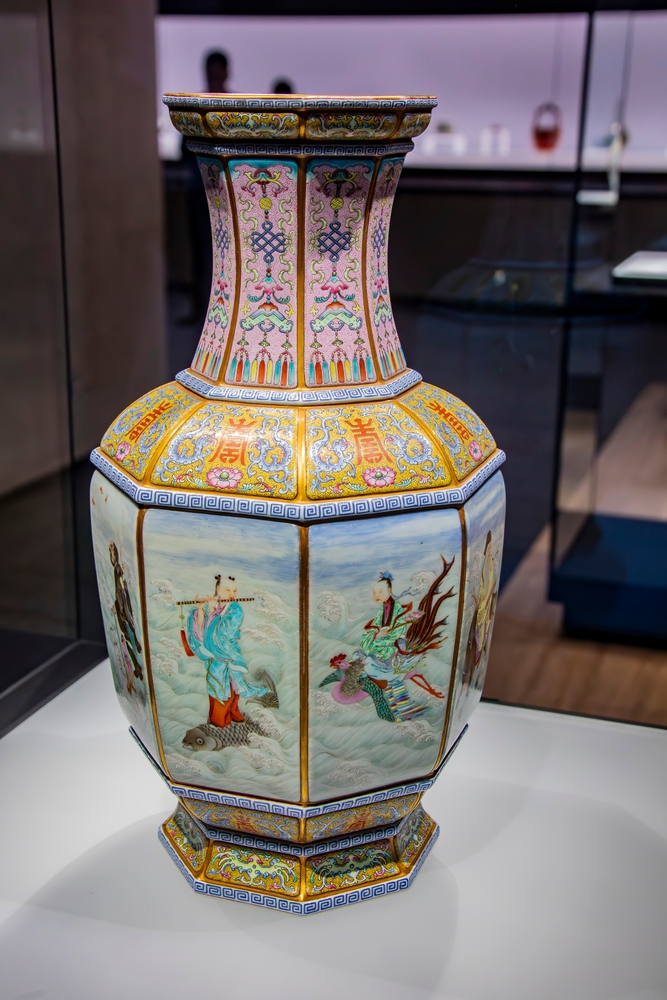
The Qianlong Dynasty, which reigned from 1735 to 1796, produced some of the most admired porcelain vases in history. These vases are known for their delicate design and fine craftsmanship, often featuring intricate hand-painted scenes from Chinese folklore. Their unique blend of vibrant colors and detailed artistry has made them highly sought after by collectors. The Qianlong vases typically feature imperial motifs such as dragons or phoenixes, symbolizing power and prosperity. Today, some of these vases can fetch over $1 million at auction depending on their condition and design.
With their connection to the Chinese emperor’s court, these vases are a symbol of cultural richness and royal status. Their rarity and meticulous craftsmanship make them a cornerstone of antique porcelain collections. Often made from the finest porcelain, they stand as a testament to the quality of art during the Qing Dynasty. The market value of these vases has grown steadily, with some examples being passed down through generations of collectors. It is important to authenticate these vases due to the rise of replicas, which has impacted their pricing over time.
Meiji Period Satsuma Vase
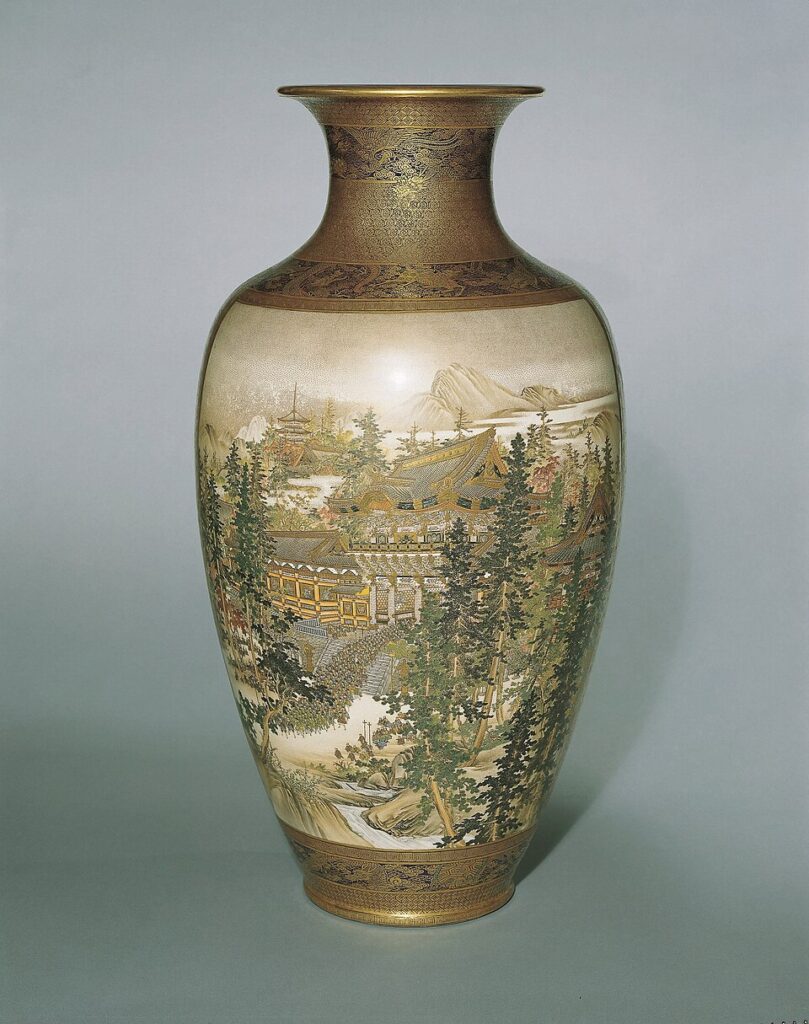
Satsuma vases from the Meiji period (1868-1912) are renowned for their distinctive style, characterized by intricate designs and gold detailing. These vases were created during a time of significant cultural transformation in Japan, blending traditional Japanese techniques with Western influences. Known for their vibrant color schemes and detailed motifs, they often depict mythological scenes or floral patterns. Satsuma vases were made in various sizes, but larger pieces tend to command higher prices. Depending on the quality and intricacy, some of these vases can sell for around $50,000 to $200,000.
The Satsuma vases were originally made in Kyoto and later in other regions of Japan. Collectors are drawn to their historical importance and their representation of Japan’s shift toward modernization during the Meiji period. The porcelain was often of very high quality, and the designs were meticulously hand-painted. Due to their craftsmanship and historical context, they have become one of the most desirable vases in the market. The price of these vases fluctuates based on their design, size, and age, with rare pieces being especially valuable.
Roman Glass Vase
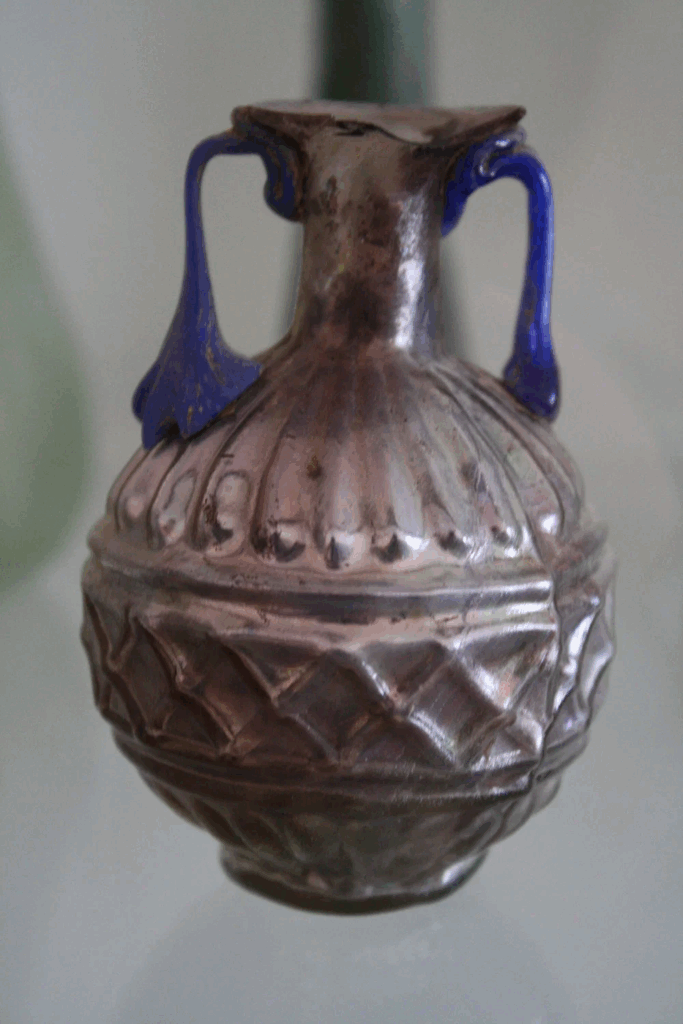
Roman glass vases, dating back to the 1st century BC to the 4th century AD, are some of the most revered relics from the ancient Roman Empire. These vases were made using early glassblowing techniques, making them a significant technological achievement. The distinctive iridescent colors, which appear as the glass ages, are a testament to the skill of Roman craftsmen. Their delicate yet durable design has helped preserve many of these vases for centuries. A Roman glass vase in good condition can fetch anywhere from $5,000 to over $50,000 depending on its rarity and craftsmanship.
The glass used for these vases is often a blend of silica, soda, and lime, which gives it its beautiful, almost translucent quality. Many of these vases were used for both decorative and practical purposes, such as holding oils or perfumes. Over time, some of these vases have become incredibly valuable due to their rarity and the advanced techniques used to make them. Archaeological findings have helped increase their desirability in the market, especially for collectors of ancient artifacts. Their ability to survive thousands of years in excellent condition has only added to their appeal in the world of antiques.
Wedgwood Jasperware Vase
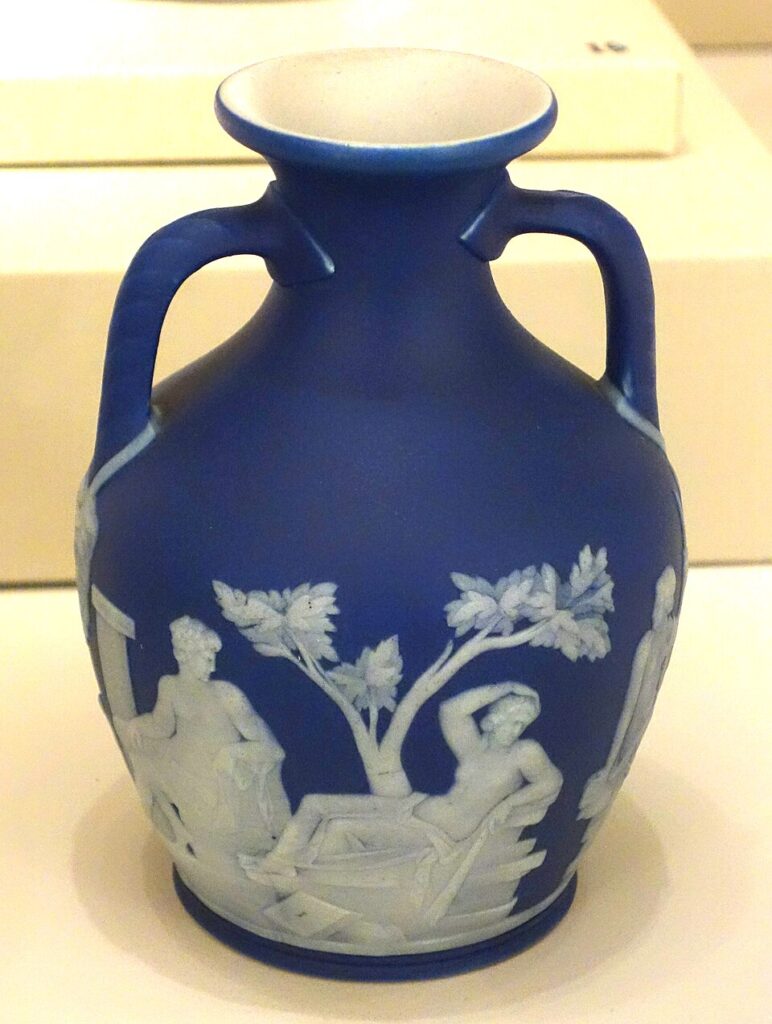
Wedgwood Jasperware, introduced by Josiah Wedgwood in the 18th century, is highly regarded for its fine porcelain and neoclassical designs. The vases feature white bas-relief motifs on colored backgrounds, often depicting scenes from Greek mythology or other classical themes. The distinct matte finish and the use of contrasting colors made Wedgwood Jasperware vases instantly recognizable and highly collectible. Today, an antique Wedgwood vase can range in value from $1,000 to $20,000 depending on its age and condition.
The Wedgwood company revolutionized ceramic production by using a technique that mimicked ancient Greek pottery, which appealed to collectors of the time. These vases were not only decorative but were often created for aristocratic clients, adding to their appeal. Collectors look for pieces with perfect condition and rare colors such as lilac or deep blue, which increase their market value. Wedgwood vases continue to be a top choice among antique collectors and hold their value remarkably well. The signature Wedgwood mark on the base is essential for verifying authenticity and can significantly affect the vase’s market value.
Royal Worcester Porcelain Vase
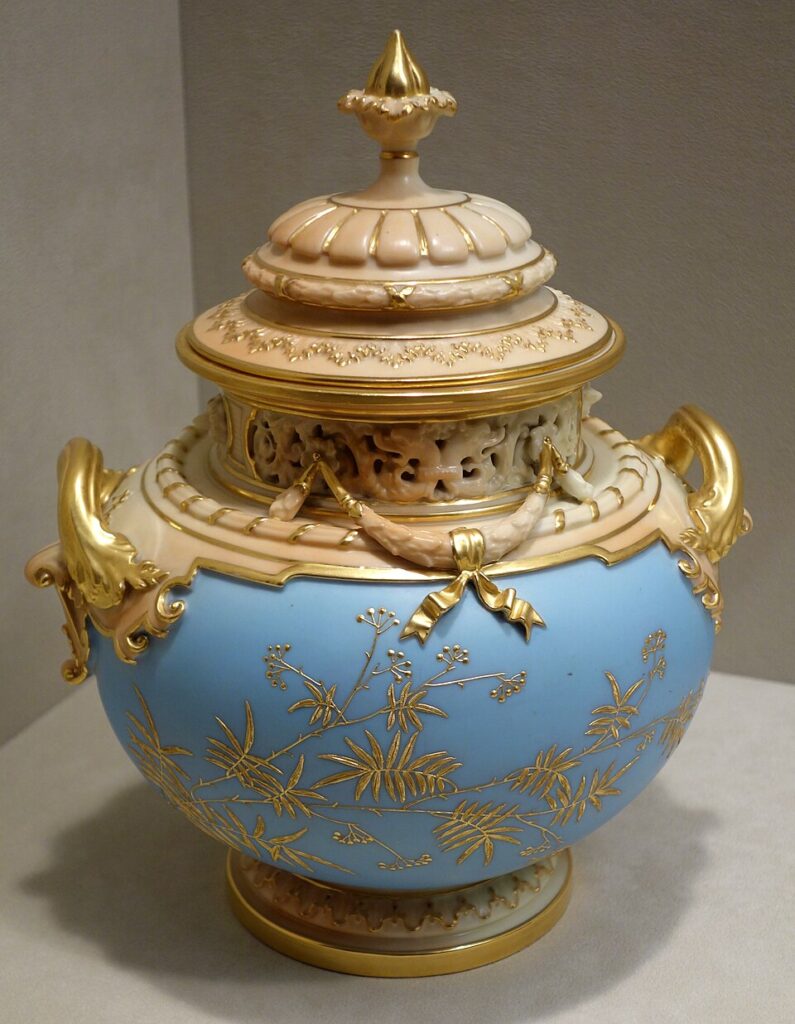
Royal Worcester vases, crafted from the mid-18th century, have become some of the most coveted porcelain pieces worldwide. Known for their fine quality and intricate hand-painted decorations, these vases often feature floral patterns, animals, or historical scenes. The pieces produced by Royal Worcester during the 18th and 19th centuries are particularly valuable due to the company’s reputation for producing porcelain of exceptional quality. Prices for these vases can range from $10,000 to $50,000 or more, depending on rarity and condition.
Royal Worcester has long been a symbol of British craftsmanship, and its vases have continued to be sought after by collectors for generations. These vases were often made for the British elite and were designed to showcase the skills of the company’s craftsmen. Some of the rarest pieces, especially those created by renowned artists, can fetch prices well over $100,000. The historical significance of these vases, paired with their beautiful artwork, makes them a standout in antique porcelain collections. Identifying authentic pieces requires a keen eye, as forgeries are common in the market.
Kangxi Period Chinese Vase
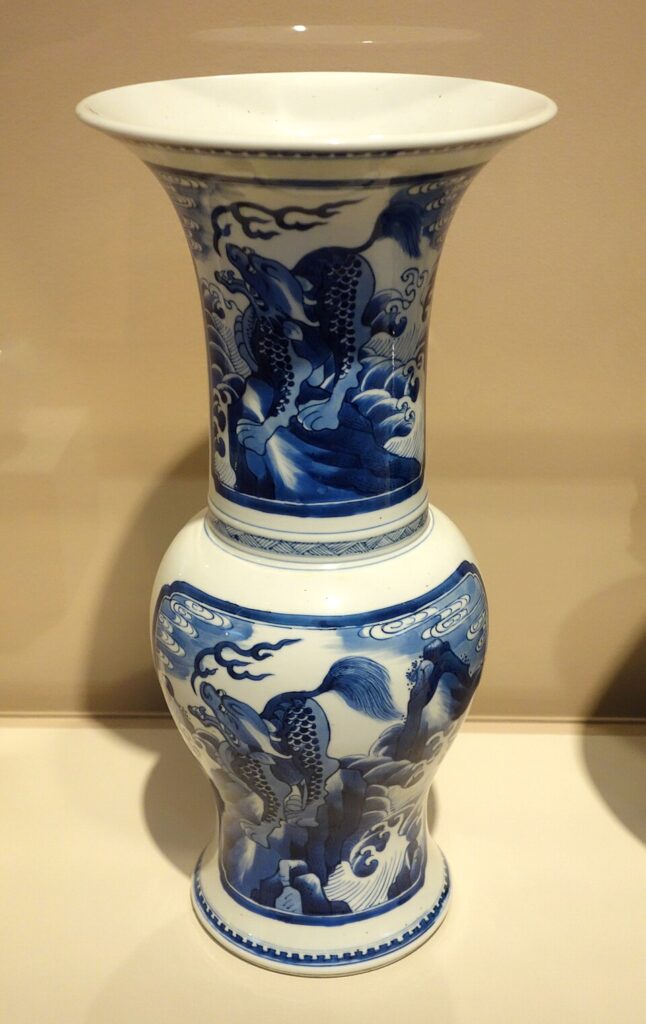
The Kangxi period (1662-1722) during the Qing Dynasty produced some of the most coveted antique vases in Chinese history. These vases are known for their stunning glaze and elaborate hand-painted decorations, often featuring intricate floral designs or historical figures. The quality of craftsmanship during the Kangxi period was unparalleled, making these vases highly desirable to collectors today. Depending on the design, these vases can range in price from $50,000 to over $300,000.
Collectors seek Kangxi vases for their rare blue and white porcelain, which is considered one of the finest ever made. The vases from this period were often created for imperial use, adding to their allure. Many pieces are still in remarkably good condition due to the durable materials used. Today, the market for these vases is robust, with high-end auction houses frequently featuring them in their catalogs. Their historical significance, tied to the reign of one of China’s longest-ruling emperors, ensures that they remain in high demand.
Art Nouveau Cameo Glass Vase
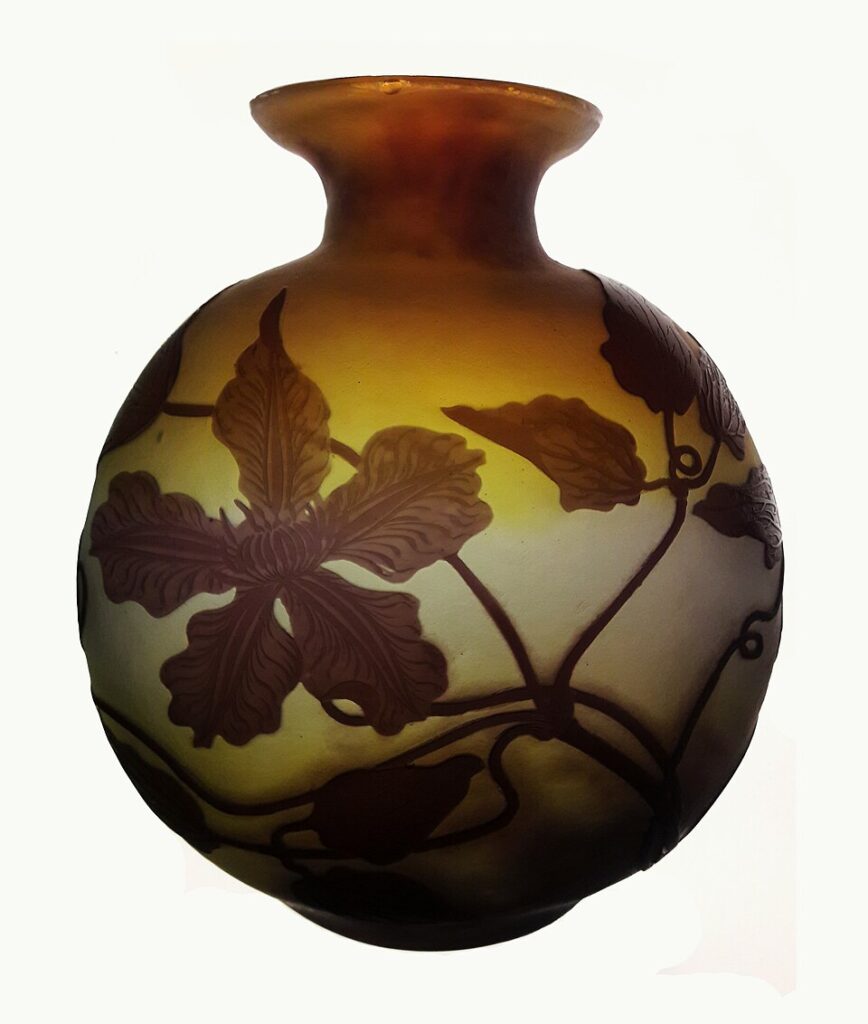
Art Nouveau came into prominence in the late 19th and early 20th centuries, and its vases are prized for their innovative designs. Made from glass that is layered and carved with intricate patterns, Art Nouveau vases often feature natural themes, such as flowers, leaves, and insects. The craftsmanship involved in creating these vases required significant skill, and the pieces are highly collectible today. Depending on the maker and design, these vases can range in value from $5,000 to over $50,000.
These vases were created by renowned artists like René Lalique and Emile Gallé, whose works are especially sought after. Their vivid colors and organic shapes set them apart from other decorative glass items. The use of cameo glass, a technique involving layers of glass carved to reveal the design beneath, makes these vases unique and desirable. As the demand for Art Nouveau continues to grow, so does the value of these vases. With their distinctive aesthetic and artistic significance, they have become one of the most revered categories of collectible glass art.
Ancient Greek Terracotta Vase
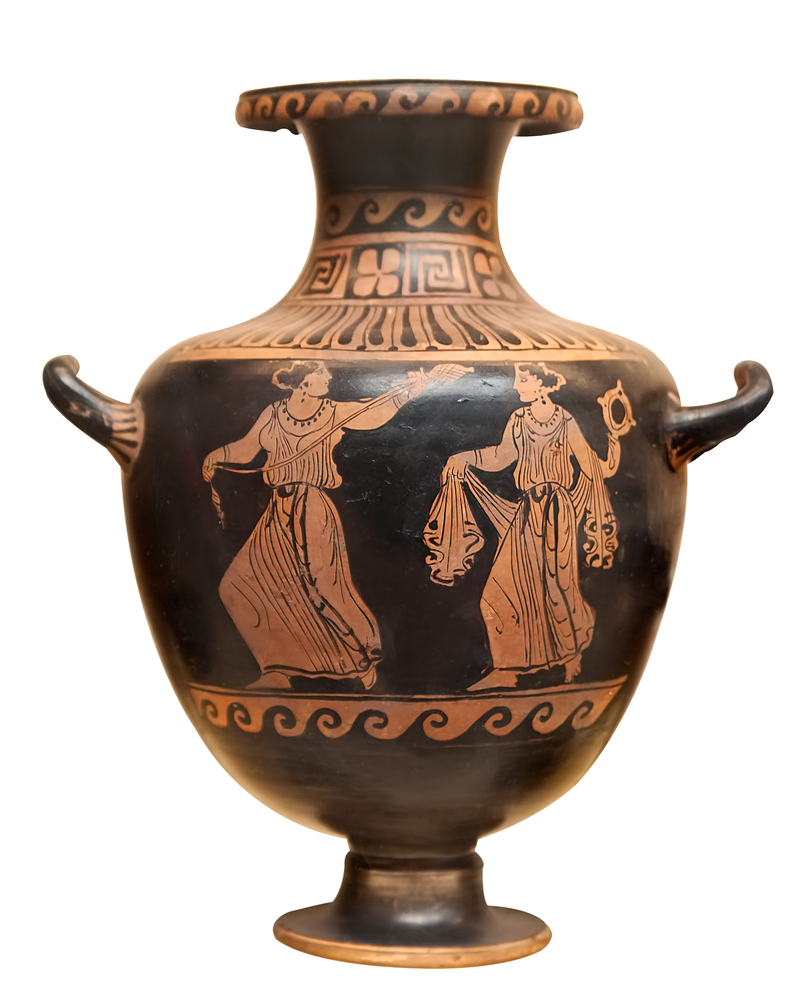
Ancient Greek terracotta vases are iconic pieces of the ancient world, often featuring detailed depictions of daily life, gods, and heroes. These vases, dating from 600 BC to 300 BC, were created for practical uses, such as storing liquids or serving as grave markers, but their beautiful artwork has made them highly collectible today. The black-figure and red-figure techniques used to create these vases were groundbreaking and have influenced ceramic art for centuries. Depending on the period and decoration, their value can range from $10,000 to $100,000.
These vases are often found in museum collections and come in various shapes, including amphorae, kylixes, and kraters. Collectors highly prize well-preserved examples, especially those with detailed, mythological scenes. Due to their age and historical significance, ancient Greek vases are considered among the most valuable antiques in the world. The distinct artistic styles and techniques used to make them continue to be studied and admired. As with many ancient artifacts, authenticity is crucial, and any signs of tampering or repairs can significantly lower their value.
Royal Vienna Porcelain Vase
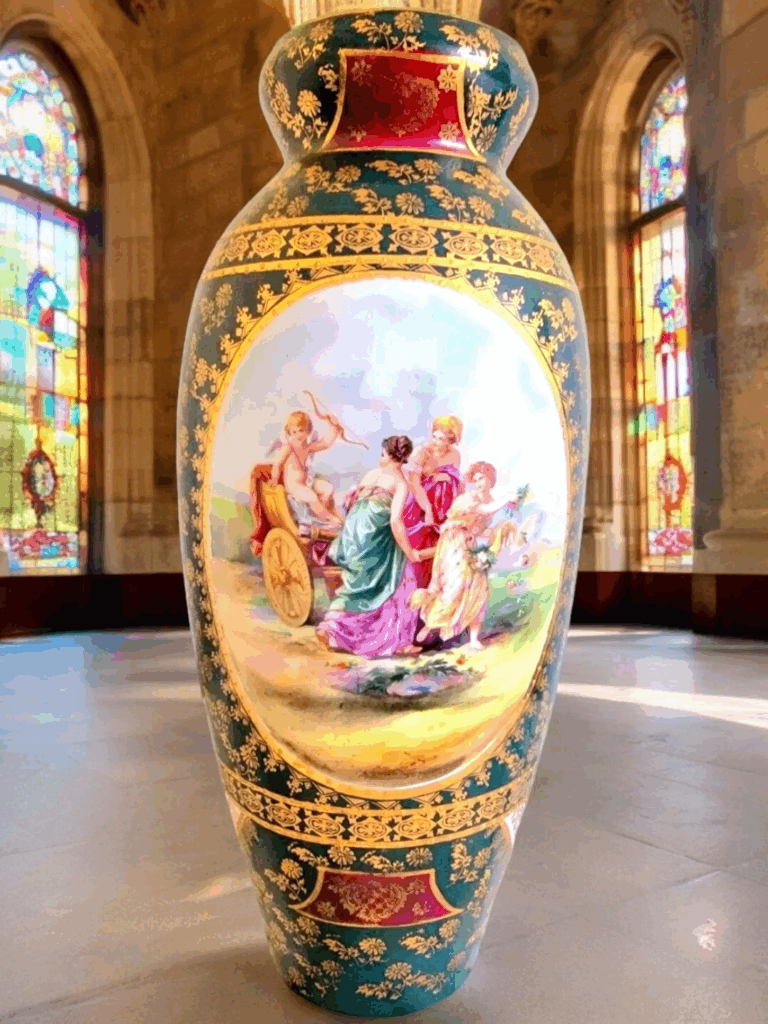
Royal Vienna vases, dating back to the 18th century, are well-known for their beautiful, hand-painted scenes of European life, landscapes, and mythology. The blue and gold designs are particularly sought after, with many featuring delicate floral motifs or portraits of aristocrats. The quality of the porcelain and the fine artistry displayed on these vases make them valuable to collectors. A well-preserved Royal Vienna vase can command a price of $10,000 to $50,000, with rare designs exceeding this range.
These vases were produced in Vienna, Austria, and were often commissioned by nobility for their homes or as gifts. Royal Vienna porcelain represents the epitome of European craftsmanship during the 18th century, with each piece meticulously hand-painted by skilled artisans. The blue and gold mark on the base of the vases is crucial for verifying their authenticity. Collectors are drawn to the vases not only for their beauty but also for their connection to European history and aristocracy. The royal connections and fine detail in the porcelain ensure that Royal Vienna vases remain highly prized.
Art Deco Vase by Lalique
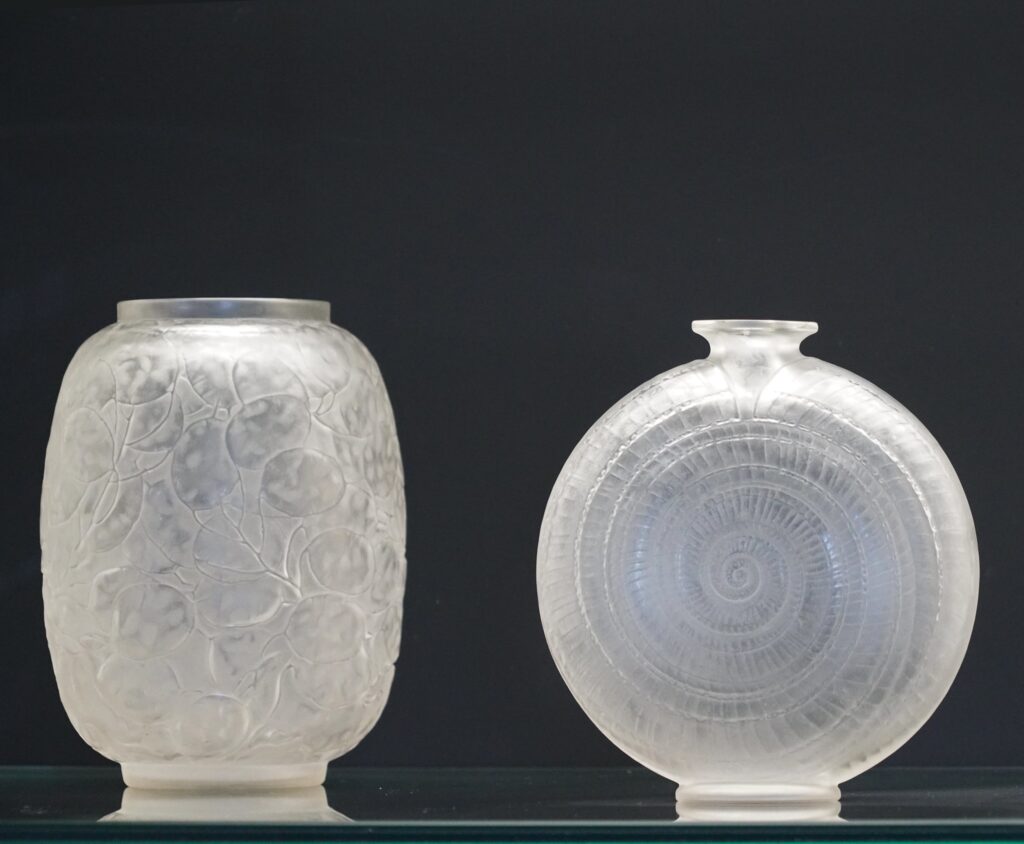
René Lalique’s Art Deco vases, created in the early 20th century, are highly coveted due to their unique designs and expert craftsmanship. Known for using glass as a medium to create elegant, nature-inspired designs, Lalique’s vases often depict animals, flowers, or geometric shapes. These vases are admired for their clarity and intricate detailing, which showcase Lalique’s revolutionary approach to glass artistry. Depending on the design and condition, Lalique vases can fetch prices from $20,000 to $100,000 or more.
Lalique’s glass vases from the Art Deco period are a blend of beauty and functionality, designed for both aesthetic appeal and practical use. The detailed etching, combined with the use of frosted glass, gives these vases a timeless quality. They are highly sought after by collectors of fine glass and Art Deco enthusiasts. Lalique’s reputation as a master glassmaker has only increased the desirability of his works over time. As a result, these vases continue to be some of the most prized items in the antique market.
French Rococo Porcelain Vase
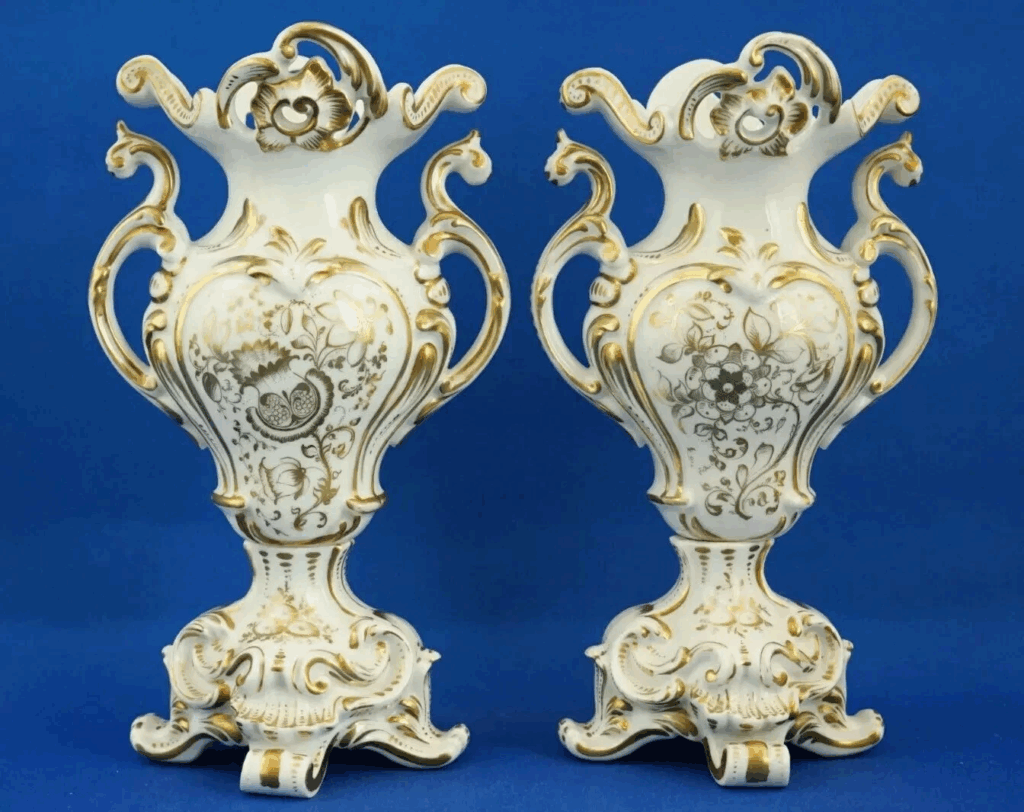
French Rococo porcelain vases, produced during the 18th century, are recognized for their extravagant and intricate designs. These vases typically feature elaborate curves, gilded accents, and hand-painted scenes that evoke a sense of luxury. The Rococo style, known for its playful and ornate decorations, was favored by the French aristocracy, and these vases were often commissioned for royal palaces. Prices for French Rococo porcelain vases vary, but they can range from $15,000 to over $100,000 for rare or particularly exquisite pieces.
The combination of fine porcelain and the whimsical designs makes these vases highly sought after by collectors. These vases are often associated with renowned French porcelain makers like Sèvres, who were known for their superior craftsmanship and attention to detail. The Rococo vases are often adorned with themes of love, nature, and mythology, giving them a timeless appeal. Collectors look for vases with minimal wear and original gilding, as these factors increase their value significantly. The French Rococo style continues to captivate art and porcelain lovers around the world.
Royal Copley Vase
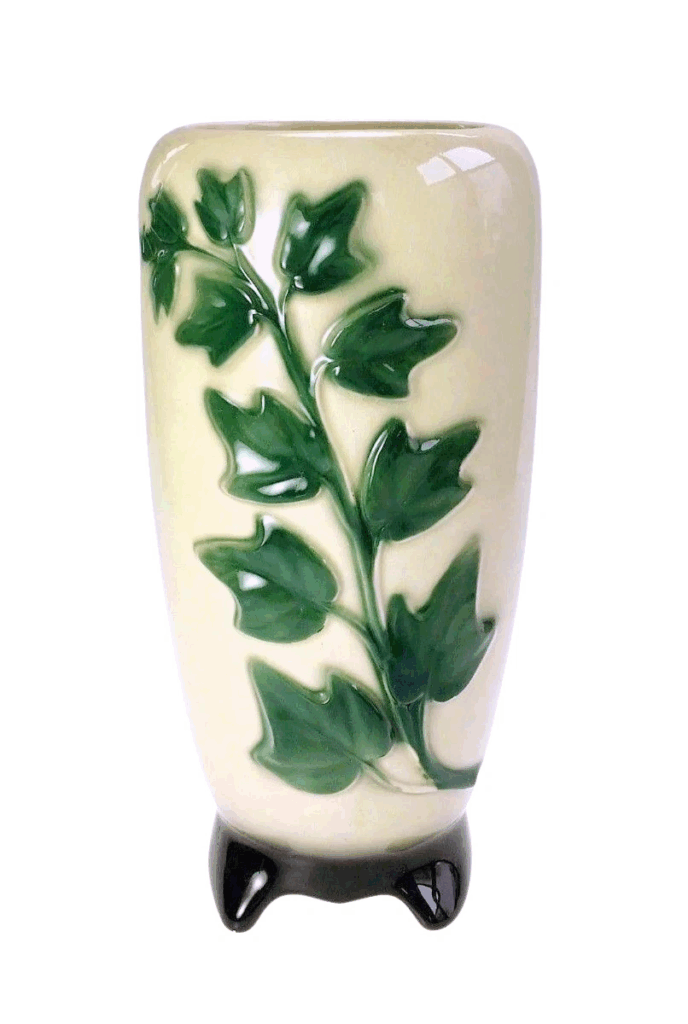
The Royal Copley company, established in the early 20th century, produced a range of high-quality ceramic vases known for their unique and colorful glazes. These vases often feature hand-painted designs, including floral patterns and abstract motifs, that reflect the American craftsmanship of the time. While not as ancient as some other antique vases, Royal Copley vases are still highly collectible, with some fetching between $500 and $5,000, depending on their design and rarity.
Royal Copley vases were produced in the United States during the mid-1900s and became especially popular in the post-World War II era. Their distinct design and vivid colors made them a favorite among collectors of American pottery. These vases were commonly used for home décor, but their artistic value has made them highly collectible today. Some of the rare designs, particularly those featuring intricate hand-painted details or limited-edition releases, are the most sought after. As the demand for American ceramics increases, so does the market for Royal Copley vases.
Tiffany Favrile Glass Vase
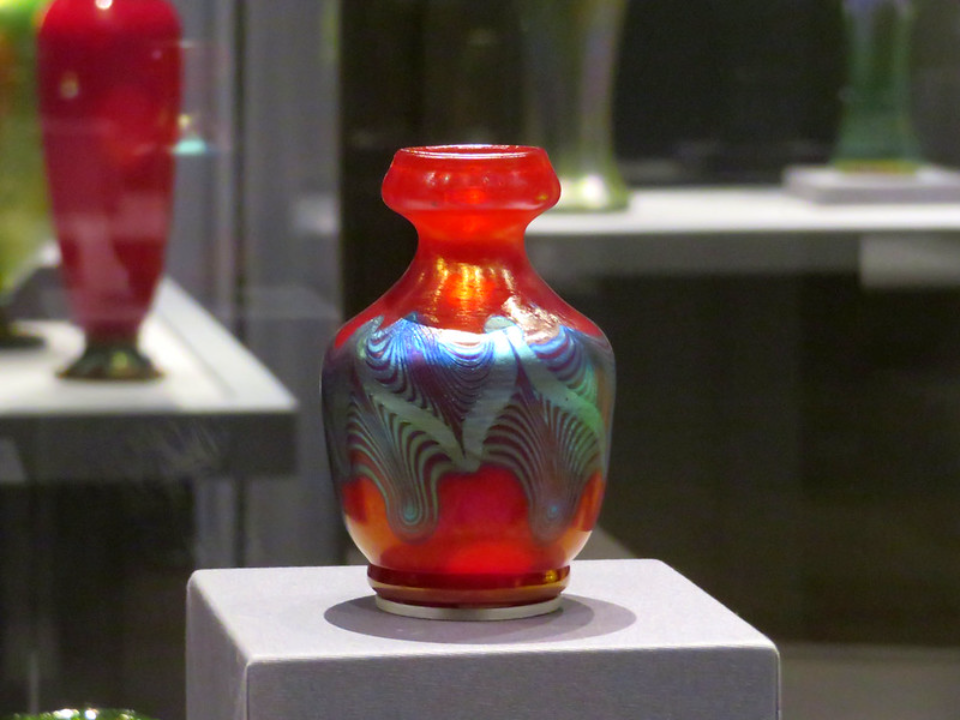
Tiffany Favrile glass vases, created by Louis Comfort Tiffany in the late 19th and early 20th centuries, are considered some of the most beautiful glassworks in history. Favrile glass is known for its iridescent finish, which is achieved through a special process of combining different metallic oxides with glass. These vases often feature nature-inspired designs, such as flowers, leaves, and birds, that showcase Tiffany’s distinctive style. Depending on the design, size, and condition, Tiffany Favrile vases can range from $5,000 to $200,000.
Tiffany’s Favrile glass vases are celebrated for their brilliant, multi-colored surfaces and their fine craftsmanship. The vases were made by Tiffany Studios, which became famous for producing stained glass, lamps, and other decorative items that reflected the Art Nouveau style. The iridescence of Favrile glass vases, combined with their elegant forms, makes them highly coveted by collectors of American art glass. Rare pieces, particularly those with unique designs or larger sizes, can command exceptionally high prices at auctions. Collectors often seek out vases with intact signatures, as these serve as verification of authenticity and enhance the vase’s value.
From ancient civilizations to more recent periods, these vases offer a window into the cultural richness of their time. Collecting them is not only about acquiring a beautiful piece but also about owning a piece of history.
This article originally appeared on Avocadu.
